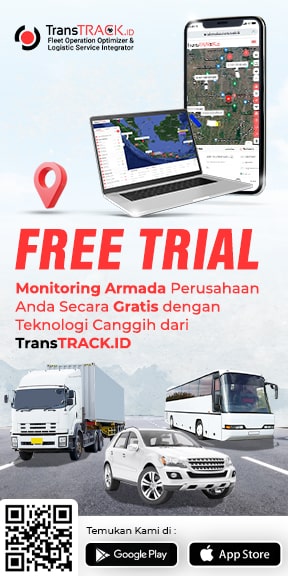Overspeed? Control Your Speed with This Technology!
Posted on July 24, 2024 by Nur Wachda Mihmidati

Overspeed is one of the leading causes of traffic accidents and safety risks on the road. When a vehicle is traveling at a speed that exceeds the posted limit, the driver faces major challenges in controlling the vehicle and reacting to emergency situations. In addition to increasing the risk of accidents, overspeeding can also cause damage to vehicle components and reduce fuel efficiency. Recognizing these dangers, it is important for drivers to understand the factors that cause overspeed through this TransTRACK article and how modern technology can help control speed effectively.
What is overspeed?
Overspeed is a condition where a vehicle is traveling at a speed that exceeds a predetermined or permitted limit. This can refer to the speed limit set by traffic laws on a particular road or the speed limit recommended by the vehicle manufacturer for safe operation.
Modern technology such as ADAS (Advanced Driver Assistance Systems) from TransTRACK already includes features to detect and prevent overspeed, helping drivers to stay within safe speed limits.
What causes drivers to overspeed?
Some of the factors that cause drivers to overspeed include:
Lack of Awareness of Speed Limits
Drivers may not know or be aware of the speed limit that applies on a particular road. This could be due to a lack of clear signage or driver indifference.
Haste or Rush
Drivers in a hurry tend to ignore speed limits to save time. This often happens in emergency situations or when drivers are running late.
Empty and Wide Roads
Empty or wide roads encourage drivers to increase their speed because they feel safe or unsupervised. Straight and smooth roads also give the impression of safety so drivers feel comfortable going faster.
Alcohol or Drug Influence
Drivers who are under the influence of alcohol or drugs tend to ignore speed limits and take higher risks. These substances can reduce a driver’s ability to judge speed and distance correctly.
High Performance Vehicles
Drivers of vehicles with high-performance engines may be tempted to test the speed of their vehicles. This is often the case with owners of sports cars or high-speed motorcycles.
Low Driving Experience
Less experienced drivers may not have the necessary skills to judge safe speeds. They may also not fully understand the risks and consequences of overspeeding.
Pressure from Passengers or Work
Drivers often feel pressured by passengers or work demands to reach their destination faster. This can lead them to disregard speed limits in favor of meeting expectations or deadlines.
False sense of security
Drivers may feel overconfident in their abilities or the condition of their vehicle. This overconfidence may lead them to ignore the posted speed limit and increase the risk of an accident.
What are the dangers of overspeed?
The dangers of overspeed include:
Increased Risk of Crash
High speeds reduce reaction time and braking distance, making it more difficult for drivers to avoid hazards. This increases the likelihood of a serious accident.
Decreased Ability to Control the Vehicle
At high speeds, vehicles become more difficult to control, especially when making turns or when road conditions are poor. Drivers may lose control more easily in emergency situations.
Damage to Vehicle Components
Driving at excessive speeds causes faster wear and tear on vehicle components such as tires, brakes, and engines. This can lead to costly breakdowns and increased maintenance frequency.
What technologies can help control speed?
Some of the technologies that can help control vehicle speed include:
Adaptive Cruise Control (ACC)
This system automatically adjusts the vehicle speed to maintain a safe distance from the vehicle in front. This helps maintain a consistent speed and prevents overspeeding.
Speed Limiter of TransTRACK
This feature limits the maximum speed of the vehicle to a predetermined limit. Drivers cannot exceed the set speed, even if they try.
Intelligent Speed Assistance (ISA)
This technology uses GPS information and digital maps to detect the speed limit on the road. The system gives warnings or even limits the speed if necessary.
Lane Keeping Assist
While more focused on lane keeping assistance, some of these systems can also warn if the vehicle speed is not in line with road conditions or safe limits.
ADAS (Advanced Driver Assistance Systems) TransTRACK
This system includes features such as Adaptive Cruise Control (ACC), Lane Keeping Assist and Speed Limit Warning. These features are designed to help drivers maintain a safe speed and comply with the applicable speed limits.
TransTRACK DMS (Driver Monitoring System)
This system monitors driver behavior, such as fatigue, concentration, and signs of risky driving. The DMS provides alerts if the driver is unfocused or likely to ignore the speed limit, helping to prevent overspeeding and improve safety.
These technologies can help drivers stay within safe speed limits and reduce the risk of overspeeding.
Overspeeding can increase the risk of a crash, reduce vehicle controllability, and cause damage to vehicle components. With TransTRACK’s ADAS Camera technology, you can effectively address these challenges. ADAS Camera offers advanced features such as speed monitoring and automatic alerts to help you maintain a safe speed. Protect yourself and your vehicle from the dangers of overspeed with innovative solutions from TransTRACK. Upgrade your vehicle system immediately and experience the benefits for driving safety and efficiency!
Topic :
driving tipsvehicle technology
 Bahasa Indonesia
Bahasa Indonesia








